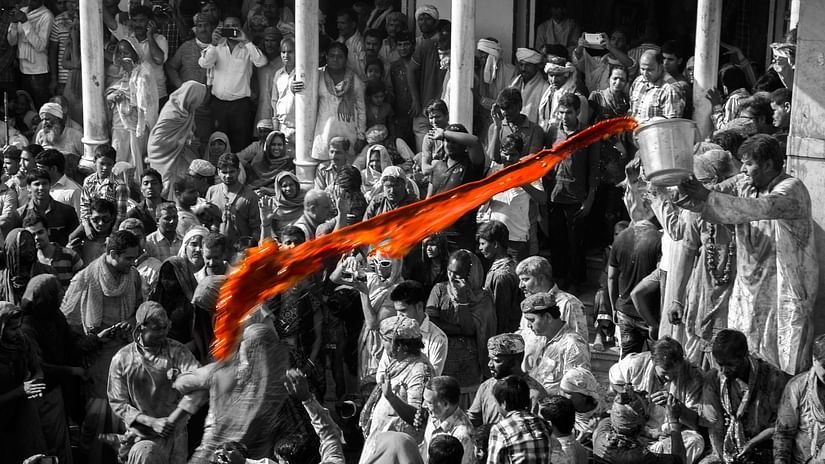- Tirupati Travel Guide
- Tirupati Photoshoot Places
- Entertainment Places in Tirupati
- Tirupati Festivals & Darshan Packages: A Divine Travel Guide for Pilgrims
- Kapila Teertham, Kapileswara Swamy Temple
- How to Travel from Tirupati to Tirumala
- Temples near Tirupati
- Chennai to Tirupati Trip Guide
- Srivari Mettu, Srinivasa Mangapuram
- Plan Your Memorable Trip to Tirupati: A Complete Guide
- Must Visit Markets in Tirupati
- Govindaraja Swamy Temple, Tirupati
- Tirupati Zoo
- Tirumala Museum
- Tirupati Hill Face
- Gangamma Temple in Tirupati
- New Year in Tirupati
- Street Shopping in Tirupati
- Things To Do in Tirupati
- Best Time To Visit Tirupati Balaji
- Monsoon in Tirupati
- Tirupati Tourism
- Places to Visit in Tirupati
- History of Tirupati City
- Things to Do in Tirupati
- Tirupati Balaji Puja
- Yoga in Tirupati
- Trekking in Tirupati
- Famous Food in Tirupati
- Kodandarama Temple Tirupati
- Silathoranam Tirupati
- Chennai to Tirupati by Road
- How to Reach Tirupati From Bangalore
- Brahmotsavam in Tirupati
- Srikalahasti Temple, Tirupati
- The Holy Steps of Venkateswara
- Waterfalls in Tirupati
- Sacred Journey: Hyderabad to Tirupati
- The Sacred Swami Pushkarini
- Seven Hills of Tirupati
- The Glorious Sri Padmavathi Ammavari Temple
- The Top 5 Richest Temples in India
- The History of Tirupati Hair Donation
- Things to Buy in Tirupati
- The Sensational Tirupati Laddu
- How to Reach Tirupati
- Interesting Facts About Tirupati Balaji
- All You Need to Know About Chandragiri Fort
- Exploring Sri Bhoo Varaha Swamy Temple
- The Best Time to Visit Tirupati
- The Mysterious Talakona Waterfall in Tirupati
- 3 Day Tirupati Itinerary
- The History of Tirupati Balaji Temple
- Explore Sri Venkateswara Wildlife Sanctuary
- Popular Hills near Tirupati to Visit
- A Guide to The Best Foods in Tirupati
- A Spiritual Journey at the Temples of Tirupati
- A Guide to Tirumala Sightseeing
- Explore the Famous Temples of Andhra Pradesh
- Tirupati Balaji Darshan Guide
- The Mystery Behind Lord Venkateshwara's Closed Eyes
- The Significance of Balaji Jayanthi
The Seshachalam hill range that houses Tirupati Balaji Temple has seven peaks. It is believed that each peak represents each head of Adisesha, the serpent God in Hinduism. Tirupati Temple's history and the rituals practised here are fascinating. It is known as the "Temple of the Seven Hills" as it is located on Venkatadri, the seventh peak of the hill range. Read on to learn more about Tirupati temple's details and how it came to be.

The Esteemed Patronage
The successful construction of Tirumala Temple can be attributed to the numerous donations of the local rulers. The first recorded contribution was several jewels and two parcels of land donated by the Pallava queen Samavai in the year 966 CE. Committed and generous devotees of the temple include the Pallava dynasty (9th century), the Chola dynasty (10th century), and the Vijayanagara pradhans (14th and 15th centuries). Thanks to the sizable donations of diamonds and gold from Emperor Krishnadevaraya, the temple flourished.
After the decline of the Vijayanagara Empire, the temple continued to sustain itself owing to ornaments and valuables donated by the Kingdom of Mysore and the Gadwal Samsthanam. To ensure the longevity of one of India’s richest temples, the current administrative body of Tirumala Tirupati Devasthanams was established in 1933 under the TTD act.
After the decline of the Vijayanagara Empire, the temple continued to sustain itself owing to ornaments and valuables donated by the Kingdom of Mysore and the Gadwal Samsthanam. To ensure the longevity of one of India’s richest temples, the current administrative body of Tirumala Tirupati Devasthanams was established in 1933 under the TTD act.
The Tale of Varahaswamy
Legend has it that Tirumala wasn’t originally the abode of Lord Venkateshwara, but of Lord Varahaswamy, who granted the land to the former. In exchange, Lord Balaji ensured that his devotees would first pay obeisance to Varahaswamy and then proceed to worship other gods, including himself. This practice is still followed by believers today, as evidenced by the throngs of worshippers and their offerings at Varahaswamy Temple. The pilgrimage site is located in the northwest corner of the holy temple tank, Swami Pushkarini. It is minutes away from Balaji Temple. Tour guides and locals inform tourists about this practice to ensure they appease the gods.
The Story Behind the Customs
Another aspect of the Tirumala Tirupati history is the rituals and the origin stories behind them. Legend goes that Kuber, the God of wealth, gave Lord Srinivasa a large sum of money so he could conduct his wedding in a grand and ceremonial manner. It is said that the lord is still repaying the loan in instalments. As a result, devotees make massive financial contributions to help Srinivasa pay off the interest owed to Kuber. Another popular custom is hair donation, which is observed by lakhs of devotees. They do this as a mannat - in hopes of a wish being fulfilled, or as penance for their sins. The temple complex has dedicated hair tonsure buildings to facilitate this.
Partaking in these customs may be optional, but there is one experience that you simply cannot miss - eating the free meals for pilgrims at the Annaprasadam complex. The sense of belonging to a community as you sit with other devotees to eat hot and freshly served meals is unmistakable.
Experience the best that Tirupati has to offer from the lap of comfort at Raj Park Hotel. Treat yourself to the hill view rooms and luxurious amenities at our hotel.